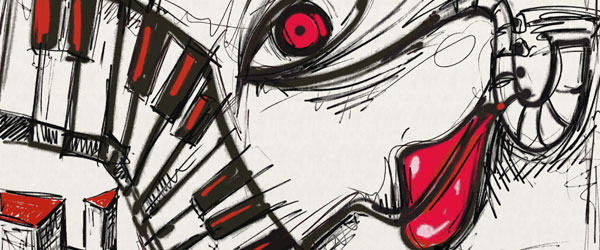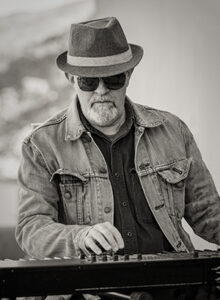Today we’re talking about becoming a rhythmic piano player and how to begin developing a concept as a rhythmic player.
This article accompanies my YouTube video of the same name:
What is a rhythmic piano player? It is the counterpart of what a rhythm guitar player does in a band. When you see two guitars in a band, usually one of them is the rhythm guitar player, doing the rhythmic chunking and providing rhythmic vitality and chordal foundation for a song.
The lead guitarist is the guy playing solos (and probably getting a lot of the audience’s attention).
The rhythmic piano player is the player that’s doing the rhythmic comping (accompanying), providing the rhythmic vitality in chords. The rhythm piano player sometimes also becomes the lead piano player for solos.
In my video, Paradiddles and Wrist Staccato, I talk about how to get started in developing a concept as a rhythmic piano player.
When you’re not soloing or playing a melody, you’re playing a rhythmic accompaniment. To do both well is part of the ingredients to becoming a complete, well-rounded player.
One thing I’ve discovered over the years is that drummers tend to make really good rhythm keyboard players (and vice versa?). A piano player who’s got a really hip rhythmic approach is going to be more valuable to band than a soloist because there are usually plenty of soloist around—guitar, sax, etc. A solid rhythm player is usually going to be more sought after in the music scene.
Not everyone is going to be able to become a riveting soloist. But they can get good at rhythm and be an important foundation of the band.
At the beginning of the video linked above, you’ll see me playing a drum rudiment called a paradiddle and demonstrating a technique exercise called wrist staccato, and moving from a paradiddle into a rhythmic comping that is embellished and catchy but still a solid rhythmic foundation for a song to be built on.
This opening part of the video shows you how starting with a paradiddle will lead you into conceptualizing different ways of playing paradiddles, sometimes to the point of not even being to recognize the underlying paradiddle anymore. But it all started with and sprung from that basic paradiddle exercise.
The video continues with a break down of the concepts and step-by-step instruction. Notation for the first exercise is shown in figure 2, along with the wrist staccato technique.
Wrist staccato is a technique of developing range of motion and relaxation in your hands and wrists, and no more musculature and movement than necessary.
If you make paradiddle exercises on a regular part of your practice, I can pretty much guarantee that you’re going to start being able to conceptualize how to play rhythm piano.
Try it out! And let us know your comments below.



Excellent dexterity of both hands. Thanks.